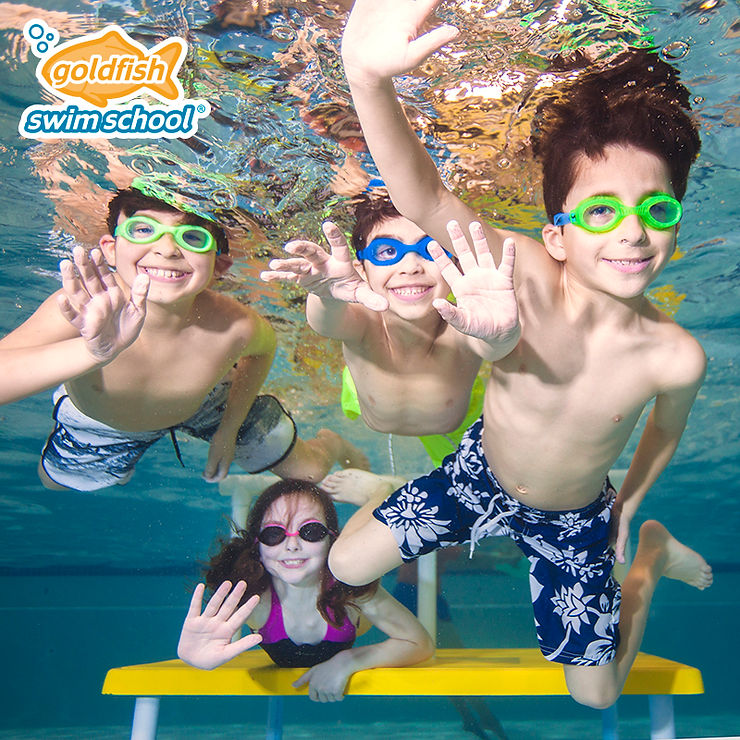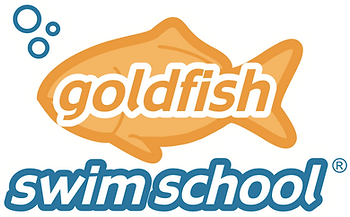Summer brings a lot of opportunity for families to spend time in and near the water. To help us best prepare for it, I reached out to the owner of Goldfish Swim School here in Boise, to give us some insight into how we can keep our families safe. Here’s her top tips for water safety this summer:

Tips for Summer Safety Swim Facts
- Drowning remains the number one cause of unintentional injury-related death among children ages 1 to 4, taking the lives of three children in the United States every day.
- According to The National Center for Fatality Review and Prevention, the summer months (May-August) account for two-thirds of annual childhood drowning incidents.
What can we, as grownups, do to tackle these statistics and keep our kids safe?
1. Enroll in Swim Lessons + Practice Basic Moves Before Returning to the Pool
One of the best ways to protect your children against drowning is to improve comfort level in the water and strengthen swimming capabilities through swim lessons, which have been proven to reduce the risk of childhood drowning by 88%. Lessons help increase muscle memory by practicing basic techniques for kids to use during a water emergency – such as the crab walk along the edge, properly getting in and out of the pool, going under water, rolling on their back, treading water, learning different strokes, etc.
2. Swap Out Floaties & Puddle Jumpers for U.S. Coastguard-Approved Lifejackets
Don’t rely on floaties and puddle jumpers to keep your kids afloat. They give children a false sense of security in the water, they can easily come loose or deflate, and they teach children to float in a vertical position which is the opposite of how our bodies actually float. Search for the Coast Guard approval on floatation devices, because it means the lifejacket has met all the regulations that the Coast Guard has set in place as it relates to performance, construction and materials. Pay attention to proper fit too. The fit matters, because if your head or ears can slip down beneath the life jacket, the device won’t be able to work as designed to keep your head above water and allow for proper breathing.
3. Seek out Bright Colored Swimwear & Properly Fitted Goggles:
When shopping for swimwear, avoid colors that could blend in with the water and choose swimsuits with bright colors instead. They will stand out in the water and make it easier to spot a swimmer in need of help. When shopping for goggles, there’s a couple of factors to look for: make sure they fit around the eye comfortably (the top of the goggle cup should fit under the eyebrow and comfortably seal on the bottom under the eye socket), the nose piece is not too tight or too wide, and the straps easily adjust.
4. Play it Cool and Follow the Rules
Sometimes when our little ones are in play-mode, rules fall by the wayside. Review rules together as a family before letting your kids loose to enjoy the water. Pay special attention to pool hours, and always schedule your swims when lifeguards are present, if possible.
- Pro tip: Make sure your kids know what to do in a water emergency. Their first instinct may be to go toward the person having trouble in the water. Instead, they should throw or reach for a life preserver of sorts – and don’t go! That way, they aren’t putting themselves in jeopardy as well and are truly able to help.
5. Designate a Water Guardian:
Make sure to keep your eyes on your kids at all times – even if lifeguards are present. Kids are as curious as they come and are always willing to push the limits without knowing the true hazards. Designate an adult “Water Guardian” and be sure to change guardians every 30 minutes so he/she is alert and refreshed. A Water Guardian’s sole responsibility needs to be keeping an eye on the swimmers. Vigilance is key – no chatting, no checking your phone, no distractions.

Swim Lessons at Goldfish Swim School

Goldfish Swim School is a leading premier learn-to-swim concept. Goldfish Swim School offers year-round swim instruction for children from four months old to 12 years old, with specially designed lessons for infant and toddler swimming. Classes are offered by specially trained instructors in a safe, child-friendly and fun environment using a research-based philosophy called The Science of SwimPlay®. The Science of SwimPlay® Curriculum is focused on teaching swim and safety skills while building character through guided play. Each school is designed to enhance learning, fun and safety for every child and parent who joins the Goldfish family.
Do you have your own tips for summer safety with your kids? Let’s hear them!
